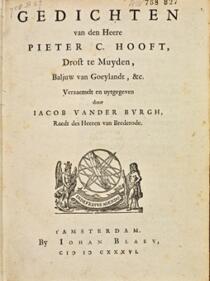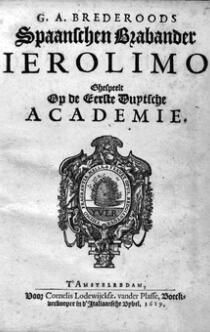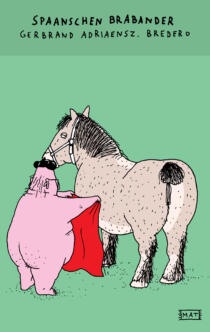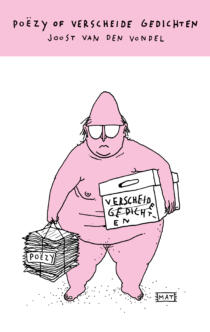Hooft was considered the “hooft der Poëten” (chief among poets) (1615), or as his first biographer put it (1671):
Wie Hooft hier poogt te steeken naar de kroon,
Die vliegt op ’t spoor van Dedaals dwaazen zoon.
(Who tries to steal the crown from Hooft,
Follows in the wake of Daedalus’ foolish son.)
For various reasons, Van der Burgh was convinced of the need for the publication: “The majority of these works would have been consigned to oblivion by his lordship [Hooft] had I not begged him to save them.” Hooft himself was mainly employed as a history scribe in those years, but at the urging of Van der Burgh and Brosterhuizen, he set aside a few weeks to collect his “juvenile rhymes” (Hooft to Baak, 1633).
The term Poems needs to be understood in the broadest sense for this work. There are very diverse sections: plays, emblems of love, sonnets and songs rub shoulders with Individual poems, wedding poems and psalms set to verse. Genres that are now considered to be bimedia or multimedia were appreciated in this book for their literary content, or, as the printer put it in reference to Hooft’s play Achilles and Polyxena (1614): for the “extreme fluency of the Poetic poems”. The publication was held together by a literary artfulness and soul-stirring content:
the poet has managed so artfully to express […] the right notes, which touched our emotions, and polished them so beautifully that they capture all the movements of our innermost thoughts.
The collection was aimed at the “tender hearts that are so susceptible to love”, for those who “wish to watch on stage with more experienced eyes the course of human passion” or “sustain their soul with biblical affairs”.
As was customary in 1636, Hooft would have culled and “rewritten” his juvenilia. The 1636 publication was not to be a collected oeuvre but instead a rigorous selection with corrections on the linguistic and technical front: only “real children and those he regards as such” were included.
The poetry community at the time could not ignore this new literary capital. The corrections also concerned the songs. In 1623, Hooft had discussed with Huygens whether the stress in the music and the words had to fall in the same place in a song. Hooft, unlike Huygens, did not find a strict metre necessary. The melody was a tune: the text developed with a metric freedom that was “led by the ears”. Hooft would bring his vision more in line with Huygens later on. For the preparation of the 1636 publication, he relied on Van der Burgh and Brosterhuizen as “the most competent to transcribe the songs into musical notation” (Hooft to Baak, 1633).
The volume of Poems was, therefore, primarily a work of linguistic and poetic art. Van der Burgh had asked Huygens “to have a look at the rhymes”. On Huygens’ instructions, Van der Burgh pleaded that only Hooft’s own verses from his emblems should be included, without engravings and without the Latin and French verses: these would only detract from “such a witty work” (Van den Burgh to Hooft, 1634). Hooft refused. His own request to provide the chorales from the plays and the songs with printed musical notations was likewise unsuccessful. In any case, this exchange of views tells us what the succinct title Poems meant in 1636.
The 1636 edition forms the basis for subsequent print editions. However, from the nineteenth century onwards, the image of the poet and the accessibility and research of his poetic works would become largely determined by Hooft’s manuscript versions, which seem to offer the space for autobiography in the oeuvre.
The personal tone of Hooft’s lyrics, within the customary repertoire of European love lyrics of the time, seems to be particularly fine-tuned. The form and imagery of Hooft’s work is, therefore, still very well received. Not his plays, but his poems, songs and “tunes” (even from the period before 1636) are highly appreciated to this day.






